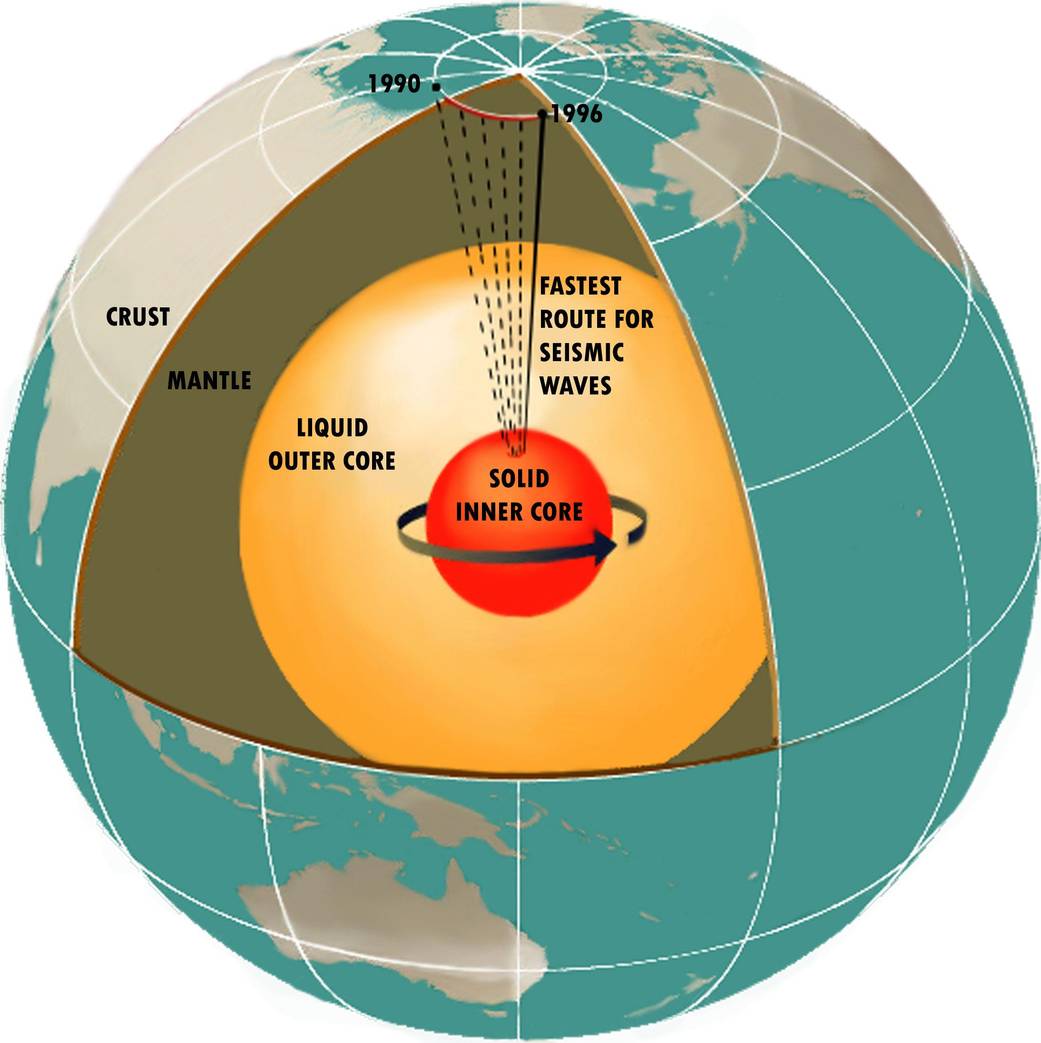Earth’s Inner Core Shouldn’t Technically Exist
Earth’s solid inner core formed about one billion years ago. Researchers are getting closer to figuring out how it happened.
One day, about a billion years ago, Earth’s inner core had a growth spurt. The molten ball of liquid metal at the center of our planet rapidly crystallized due to lowering temperatures, growing steadily outward until it reached the roughly 760-mile (1,220 kilometers) diameter to which it’s thought to extend today.
That’s the conventional story of the inner core’s creation, anyway. But according to a new paper published online this week in the journal Earth and Planetary Science Letters, that story is impossible.
In the paper, the researchers argued that the standard model of how the Earth’s core formed is missing a crucial detail about how metals crystallize: a mandatory, massive drop in temperature that would be extremely difficult to achieve at core pressures.
By Brandon Spektor – Full Story at Live Science
Image via NASA



